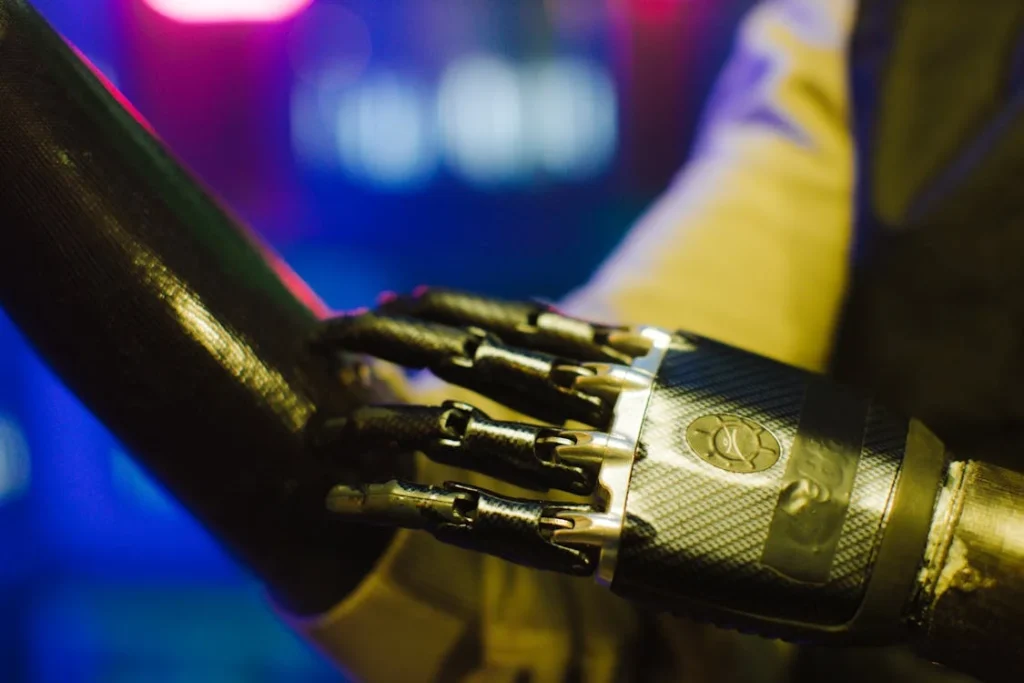Prosthetic technology has come a long way, with bionic limbs capturing much of the spotlight in recent years. These high-tech prosthetics offer advanced movement, sensory feedback, and smart controls, but they are not the only option. Traditional prosthetics—those without electronic or robotic components—remain a preferred choice for many individuals due to their simplicity, durability, and reliability.
Not everyone needs or wants a highly complex prosthetic limb. Many users find that a well-fitted, non-bionic prosthetic provides everything they need to walk, hold objects, and go about daily life without worrying about battery life, software updates, or delicate electronics. Traditional prosthetics have been refined over decades, making them highly practical, low-maintenance, and cost-effective.

The Unmatched Reliability of Traditional Prosthetics
One of the biggest reasons people choose traditional prosthetics over bionic alternatives is their unmatched reliability.
These prosthetic limbs are designed with simplicity in mind, ensuring they work consistently without the need for electricity, sensors, or complex programming.
For many users, especially those living in remote areas or with active lifestyles, having a prosthetic that functions without complications is a major advantage.
No Dependency on Electronics or Batteries
Bionic prosthetics, while highly advanced, come with a reliance on electronic components that require regular charging and software updates.
If the battery dies or a sensor malfunctions, the user may temporarily lose full functionality of their limb. This can be a major inconvenience, especially in situations where charging may not be readily available, such as during travel, long workdays, or outdoor activities.
Traditional prosthetics eliminate these concerns entirely. Because they rely on mechanical movement, they do not require a power source.
Users never have to worry about a prosthetic shutting down unexpectedly, making them highly dependable in everyday situations. Whether it’s walking long distances, performing physical labor, or simply going about a busy day, a traditional prosthetic functions without interruption.
Durability in Challenging Conditions
Traditional prosthetics are built to last. They are often made from lightweight yet strong materials such as carbon fiber, titanium, or high-quality plastics, ensuring they can withstand daily wear and tear.
Since they do not contain delicate electronics, they are less prone to damage from moisture, dust, or extreme temperatures.
For individuals who work in environments such as construction, agriculture, or outdoor industries, having a prosthetic that can withstand rough conditions is crucial.
Bionic limbs, with their sensitive circuits and motors, may require extra caution in such environments.
Traditional prosthetics, on the other hand, offer peace of mind, allowing users to engage in physically demanding activities without worrying about damaging expensive technology.
Minimal Maintenance and Repairs
Every prosthetic requires occasional maintenance, but traditional prosthetics are far easier and more affordable to maintain than bionic limbs.
With fewer moving parts and no electronic systems that can fail, users rarely face unexpected breakdowns. If a component wears out, it can typically be repaired or replaced quickly and at a lower cost.
Bionic prosthetics, by contrast, often require specialized technicians for repairs. A malfunctioning sensor or software issue can take time to diagnose and fix, sometimes requiring users to go without their prosthetic for an extended period.
For those who cannot afford downtime, the reliability of a traditional prosthetic is an undeniable advantage.
Trusted by Generations of Prosthetic Users
Traditional prosthetic limbs have been used for decades, with continuous improvements making them more comfortable and effective.
Many users find that they can achieve excellent mobility and function without needing the latest technology. Prosthetists have perfected the design and fit of these limbs, ensuring that they offer a natural and effective walking or gripping motion.
For individuals who have been using traditional prosthetics for years, switching to a bionic limb can feel unnecessary. Many find comfort in what they already know, trusting the reliability of their prosthetic without feeling the need to upgrade to a more complex system.
The familiarity and dependability of traditional prosthetics make them a trusted choice for people of all ages.

The Simplicity of Traditional Prosthetics: Easy to Use, Easy to Live With
One of the most significant advantages of traditional prosthetics is their simplicity. Unlike bionic limbs, which require sensors, software calibration, and electrical power, traditional prosthetics operate purely through mechanical means.
This makes them intuitive and easy to use, with a learning curve that is often much shorter than that of a high-tech alternative. For many users, particularly those new to prosthetics, the ability to quickly adapt to their artificial limb without extensive training is invaluable.
Immediate Adaptability Without Extensive Training
When a person receives a prosthetic limb, one of the first challenges is learning how to use it effectively.
Traditional prosthetics allow for quicker adaptation because they function based on body movement and mechanics rather than requiring users to learn how to control electronic components.
A prosthetic leg, for example, moves naturally as the user shifts their weight, while a body-powered prosthetic hand operates by simple muscle contractions or shoulder movements.
Bionic limbs, on the other hand, often require weeks or even months of training. Since they rely on sensors that detect muscle signals, users must first strengthen their residual limb to generate clear signals.
Even after this stage, they may need additional time to adjust to the prosthetic’s response time, learn how to fine-tune movements, and adapt to any built-in artificial intelligence that refines motion control.
For individuals who prefer a straightforward approach, traditional prosthetics offer an easier and more accessible solution.
No Need for Technical Knowledge or Troubleshooting
Technology can be both a benefit and a burden. While bionic prosthetics offer advanced features, they also come with the risk of malfunctions.
Users may need to troubleshoot connectivity issues, update software, or recalibrate sensors if the device is not responding correctly. This requires technical knowledge or assistance from a specialist, which is not always available, especially in rural or remote areas.
Traditional prosthetics remove this layer of complexity. Since they do not rely on electronic systems, they work consistently without requiring the user to worry about updates, maintenance apps, or troubleshooting.
This makes them particularly beneficial for individuals who prefer a low-maintenance option or those who may not have easy access to a prosthetist for frequent adjustments.
Comfort and Customization for Everyday Life
A well-designed traditional prosthetic is made to fit the user’s lifestyle and needs. Prosthetists work closely with individuals to ensure the limb is lightweight, comfortable, and shaped in a way that allows for natural movement.
Since traditional prosthetics do not have additional hardware such as wires, batteries, or motors, they are often lighter than bionic alternatives. This makes them more comfortable for extended wear, reducing fatigue and strain on the residual limb.
Customization is another key factor. While bionic prosthetics are often built to standard specifications due to the complexity of their internal components, traditional prosthetics can be tailored with ease.
Users can request modifications for sports, specific job requirements, or everyday comfort, making them highly adaptable to personal preferences.
Some traditional prosthetic legs are even designed for high-impact activities like running, while others are optimized for all-day walking with minimal pressure on the joints.
Reliable Function in All Environments
Traditional prosthetics function in nearly any environment without restrictions. Users can swim, run, or engage in outdoor activities without worrying about damage from moisture, dust, or extreme temperatures.
Bionic prosthetics, however, often have limitations when exposed to water or harsh conditions, requiring extra care to prevent damage to electronic components.
For individuals who lead active lives or work in physically demanding industries, the ability to rely on their prosthetic under all conditions is a major advantage.
The simplicity of traditional prosthetics allows users to focus on their daily tasks rather than worrying about whether their device will function properly in different settings.
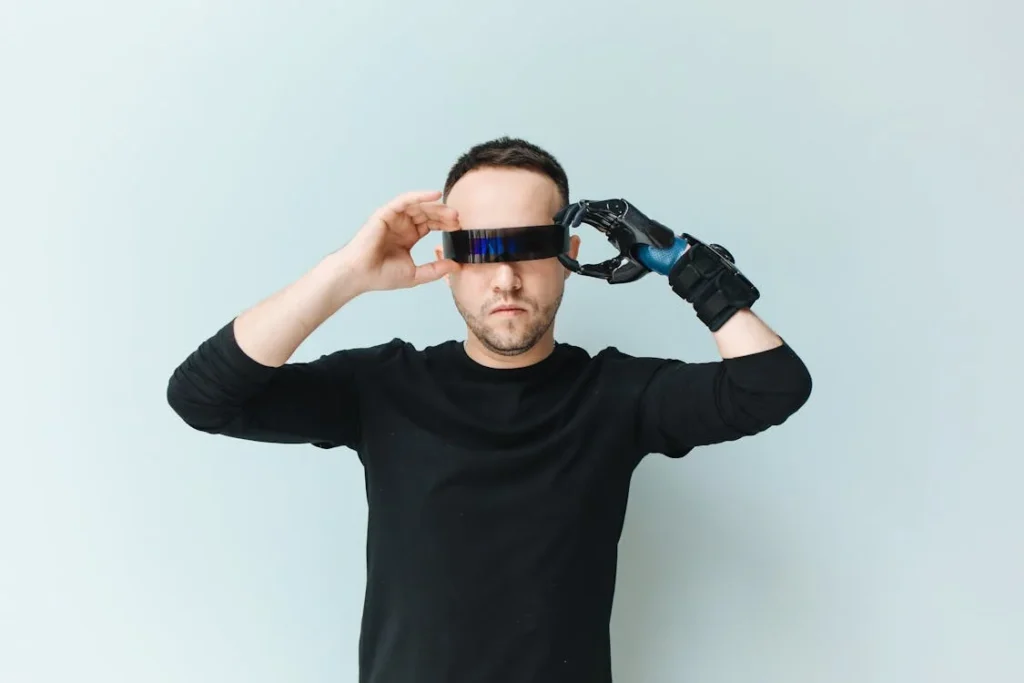
The Cost-Effectiveness of Traditional Prosthetics Compared to Bionic Alternatives
One of the most practical reasons many people choose traditional prosthetics over bionic limbs is affordability.
While bionic prosthetics come with cutting-edge technology, they also come with a high price tag due to their advanced materials, sensors, and electronic components.
Traditional prosthetics, on the other hand, provide a cost-effective solution that balances function, durability, and accessibility.
Lower Initial Costs Without Compromising Functionality
Traditional prosthetics are significantly more affordable than their bionic counterparts. Since they do not rely on electronic parts, artificial intelligence, or powered mechanisms, the manufacturing process is more straightforward.
The materials used in traditional prosthetics, such as carbon fiber, plastic, and metal alloys, are strong and lightweight while remaining cost-effective. This means that users can get a high-quality, custom-fit prosthetic without having to spend an excessive amount of money.
Bionic prosthetics, by contrast, require a substantial financial investment. The complex hardware, embedded microprocessors, and advanced motorized systems increase production costs, making them inaccessible to many individuals.
In countries where healthcare coverage for prosthetics is limited, the affordability of traditional options makes them the preferred choice for a majority of users.
Minimal Maintenance and Repair Costs
Beyond the initial purchase price, ongoing maintenance and repairs must be considered when choosing a prosthetic limb. Traditional prosthetics are designed to be low-maintenance, with sturdy components that can withstand daily wear and tear.
If a part wears out or breaks, repairs are usually simple and inexpensive, requiring only basic mechanical adjustments. Many issues can be fixed by a prosthetist without needing specialized equipment or software updates.
Bionic prosthetics, on the other hand, often require expert technicians for repairs. If a sensor malfunctions, a motor fails, or software glitches occur, professional servicing is necessary, and replacement parts can be expensive.
Additionally, because bionic limbs depend on batteries and electronic components, users must be mindful of power consumption and charging schedules, adding another layer of long-term costs.
Accessibility and Availability in Different Regions
For people living in rural or underserved areas, traditional prosthetics offer a practical solution because they do not require specialized clinics, high-tech repair facilities, or complex training programs.
They can be fitted and adjusted locally without the need for advanced technology, making them more accessible to a wider population.
Since traditional prosthetics have been around for decades, they are widely available, and prosthetists are well-trained in fitting and maintaining them.
Bionic prosthetics, however, require specialized facilities for fittings and adjustments, often making them difficult to access for individuals who live far from urban centers.
Users may need to travel long distances for repairs or recalibration, which can be costly and time-consuming. The simplicity of traditional prosthetics ensures that users can receive the care and support they need without unnecessary logistical challenges.
Longevity and Long-Term Value
A well-made traditional prosthetic can last for many years with minimal maintenance, making it a long-term investment. Because it does not rely on electronics, there is little risk of technological obsolescence.
In contrast, bionic prosthetics, like any other piece of technology, can become outdated as newer models are released. This means that users may eventually need to upgrade to keep up with advancements, leading to additional expenses.
For many individuals, the goal of a prosthetic limb is to restore function and independence without unnecessary complications. Traditional prosthetics deliver on this promise by providing an affordable, reliable, and long-lasting solution that meets everyday mobility needs.
The ability to receive a durable and effective prosthetic without excessive financial strain makes traditional options a valuable choice for people of all backgrounds.
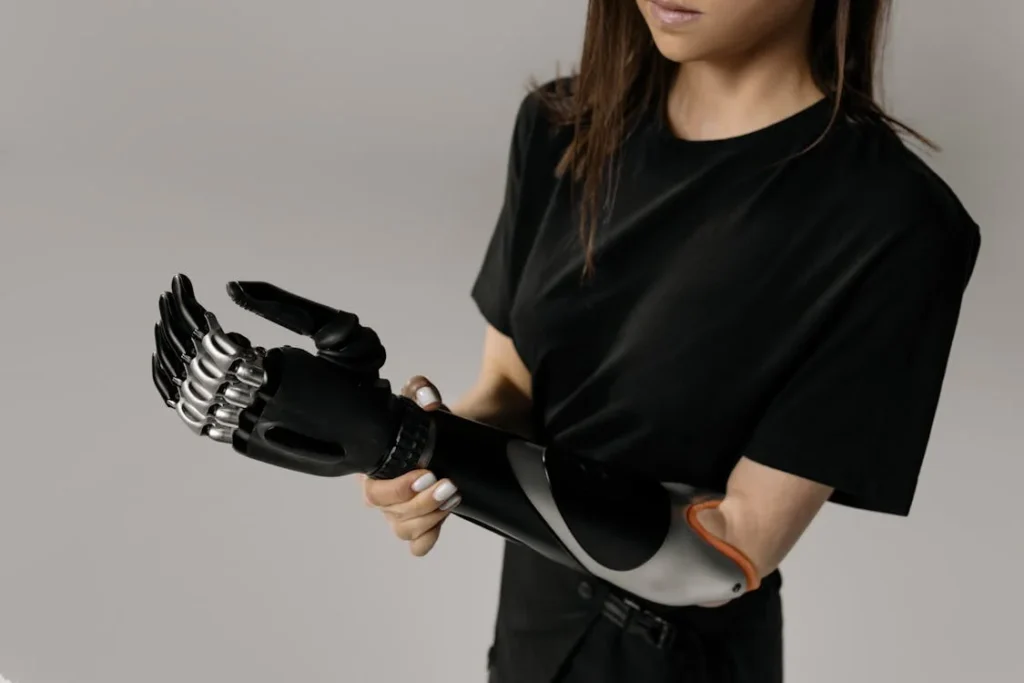
Traditional Prosthetics and Their Role in Different Lifestyles
Traditional prosthetics are not just about affordability and reliability—they are also adaptable to different lifestyles. People with limb loss come from all walks of life, and their prosthetic needs vary based on their daily routines, professions, and physical activities.
Whether someone is a student, an athlete, a working professional, or a retiree, traditional prosthetics provide practical solutions tailored to individual lifestyles.
Supporting Active and Outdoor Lifestyles
For individuals who enjoy outdoor activities such as hiking, cycling, or swimming, traditional prosthetics offer durability and ease of use.
Unlike bionic prosthetics, which contain delicate electronic components that must be protected from water, dust, and extreme temperatures, traditional prosthetics are built to withstand various environments.
Many prosthetic legs designed for outdoor activities feature strong, lightweight materials that allow users to move freely without worrying about damaging sensitive technology.
Athletes also benefit from traditional prosthetics, especially those designed for high-impact sports. Running blades, for example, provide exceptional energy return and allow amputees to compete at professional levels.
These prosthetics do not require electronic adjustments and are built purely for function, allowing users to focus on performance rather than maintenance. Whether it’s sprinting, rock climbing, or playing football, traditional prosthetics offer reliable solutions for active individuals.
Enhancing Workplace Productivity
Traditional prosthetics play a critical role in supporting professionals across different industries. Many jobs require workers to be on their feet for long hours, and the last thing anyone wants is to worry about battery life or electronic failures.
Traditional prosthetic legs provide stability and comfort, allowing users to focus on their work without technical distractions.
For those in physically demanding fields such as construction, agriculture, or manufacturing, traditional prosthetics offer a durable solution that can withstand heavy use.
Unlike bionic prosthetics, which require extra care to prevent damage from dust, moisture, or sudden impacts, traditional prosthetics function reliably in rugged conditions.
Workers can perform tasks such as lifting, carrying, and operating machinery with confidence, knowing that their prosthetic limb will not unexpectedly fail.
Even in office environments, traditional prosthetic arms and hands help professionals complete tasks efficiently.
Whether it’s typing on a keyboard, writing, or handling paperwork, well-designed mechanical prosthetic hands offer the dexterity needed for daily activities.
With custom-fitted prosthetics, users can maintain productivity without needing complex recalibration or electronic adjustments.
Supporting Everyday Independence for All Age Groups
Traditional prosthetics offer independence to individuals of all ages, from children to senior citizens. For young users, a simple, lightweight prosthetic is easier to learn and control compared to a bionic alternative, which may require extensive training.
Pediatric prosthetics are designed to keep up with a child’s active lifestyle, allowing them to play, explore, and participate in school activities without worrying about fragile electronic components.
For elderly individuals, ease of use is an important factor. Many older adults prefer traditional prosthetics because they require less maintenance and technical knowledge.
A well-fitted prosthetic leg allows seniors to walk comfortably and maintain their mobility without the added stress of managing electronic controls or troubleshooting issues.
The simplicity of traditional prosthetics ensures that users can continue leading independent lives without unnecessary complications.
Culturally and Socially Acceptable Solutions
In many parts of the world, traditional prosthetics align more closely with cultural preferences and expectations. Some individuals prefer a prosthetic limb that looks natural, while others prioritize function over aesthetics.
Traditional prosthetics offer a range of customization options, allowing users to choose designs that fit their personal preferences.
Whether someone wants a prosthetic that mimics the appearance of a natural limb or one that is purely mechanical, traditional options provide flexibility in design.
Socially, the use of prosthetic limbs varies across cultures. In some communities, advanced bionic limbs may not be easily accessible or widely understood.
Traditional prosthetics, with their straightforward design and established history, are often more accepted and integrated into daily life.
The ability to repair or adjust a prosthetic without relying on specialized technology makes them a practical choice for many people around the world.
A Prosthetic That Adapts to Life, Not the Other Way Around
One of the greatest strengths of traditional prosthetics is that they adapt to the user’s lifestyle, not the other way around. Users do not need to change their daily habits or routines to accommodate a complex system of wires, sensors, or software.
Instead, they receive a prosthetic that seamlessly integrates into their activities, offering freedom and functionality without unnecessary complications.
Whether someone is a student attending school, a parent caring for children, a worker managing daily tasks, or a retiree enjoying a peaceful life, traditional prosthetics provide a practical, reliable, and easy-to-use solution.
They offer the independence and mobility needed to navigate life without limitations, proving that sometimes, simplicity is the key to success.
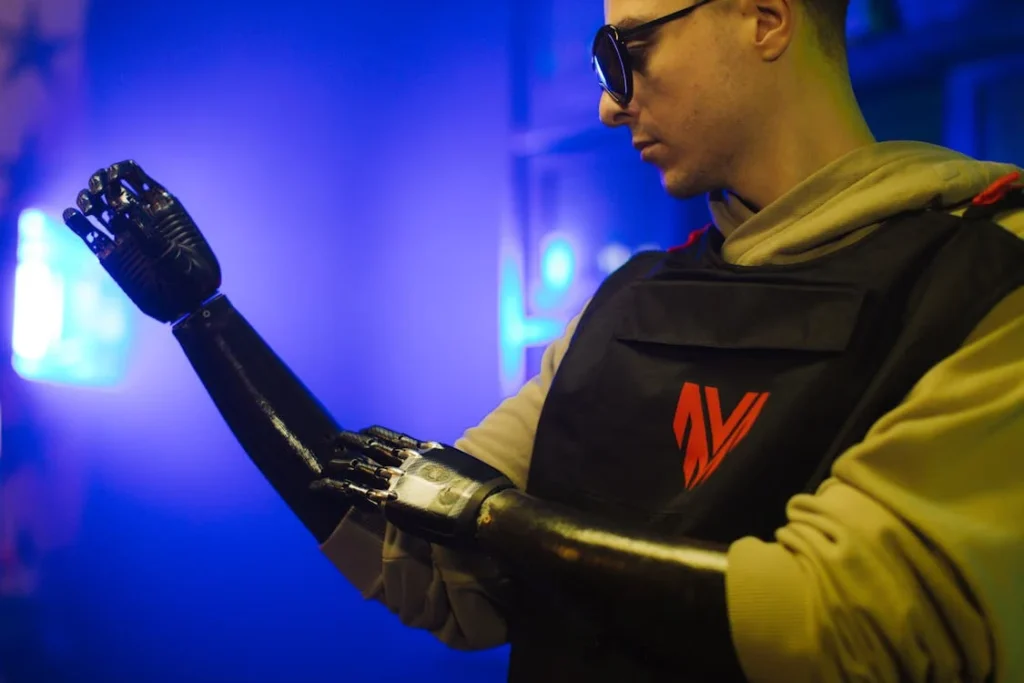
The Psychological and Emotional Benefits of Traditional Prosthetics
The impact of prosthetic limbs extends beyond physical function; they also play a significant role in emotional well-being and psychological adjustment.
While bionic prosthetics focus on replicating human movement through advanced technology, traditional prosthetics offer stability, familiarity, and ease of use, which can be equally important for a person’s confidence and mental health.
The simplicity of a reliable prosthetic can ease the emotional challenges that come with limb loss, allowing users to feel in control of their daily lives.
Faster Emotional Adaptation and Acceptance
Adjusting to a prosthetic limb is a deeply personal journey, and every individual experiences it differently. One of the biggest hurdles after amputation is regaining a sense of self and feeling comfortable with a new way of moving.
Traditional prosthetics, with their straightforward design and ease of use, often help users adapt faster because they do not require extensive training or unfamiliar technology.
For many, the challenge of learning how to use a complex bionic prosthetic can be overwhelming. The need to operate muscle sensors, understand digital feedback, and troubleshoot potential malfunctions may create frustration.
Traditional prosthetics remove these barriers, allowing users to focus on function rather than technology. The quicker a person adapts to their prosthetic, the sooner they regain confidence in their ability to perform daily activities independently.
Reduced Anxiety Over Functionality and Breakdowns
The fear of a prosthetic failing at an inconvenient moment can create anxiety, particularly for individuals who rely on their artificial limb for essential activities such as commuting, working, or caring for loved ones.
Traditional prosthetics offer peace of mind because they do not rely on electronic components that could malfunction. Users do not have to worry about losing power, software glitches, or mechanical failures that require specialized repairs.
For someone navigating a busy lifestyle, having a prosthetic that is always functional provides a sense of security.
Whether walking into a meeting, taking public transportation, or going on a trip, the assurance that a prosthetic will work under any condition allows users to focus on their day instead of worrying about whether their limb will cooperate.
Stability and Familiarity in Social Situations
Limb loss can be a sensitive subject, and many individuals go through a period of adjusting to their new appearance and mobility. Some people feel self-conscious about using a prosthetic, especially in public settings.
Traditional prosthetics provide a sense of stability and familiarity, helping individuals regain confidence in their interactions with others.
Since traditional prosthetics have been in use for decades, they are widely accepted and understood. Users do not have to deal with the curiosity or attention that often comes with high-tech bionic limbs, which can sometimes feel intrusive.
For those who prefer to blend in rather than stand out, a traditional prosthetic allows them to move through daily life with greater ease and comfort.
Empowering Users Through Control and Independence
One of the most empowering aspects of traditional prosthetics is that they give users control over their mobility without requiring them to depend on technology.
The ability to walk, hold objects, and perform everyday tasks without external assistance restores a sense of independence. For individuals who value self-sufficiency, having a prosthetic that does not require troubleshooting or external support is a significant emotional relief.
The simplicity of traditional prosthetics allows users to trust their limb completely. They do not have to learn complicated operating systems or worry about keeping up with technological advancements.
This creates a sense of ownership over their mobility, reinforcing confidence in their ability to navigate the world on their own terms.
Strengthening Resilience and Mental Well-Being
Overcoming limb loss is a challenge that requires resilience, and for many, adapting to a prosthetic is part of the healing process. Traditional prosthetics help users focus on progress rather than technology.
The predictability and dependability of a well-fitted prosthetic limb enable users to set goals, regain routines, and push themselves toward new achievements without unnecessary obstacles.
Many prosthetic users find that as they regain mobility and independence, their self-esteem improves. The ability to move comfortably, return to work, or participate in social activities without limitations has a direct impact on mental well-being.
A prosthetic should not be a source of stress or frustration—it should be a tool that enhances life, and traditional prosthetics excel in providing a straightforward, effective, and stress-free experience.
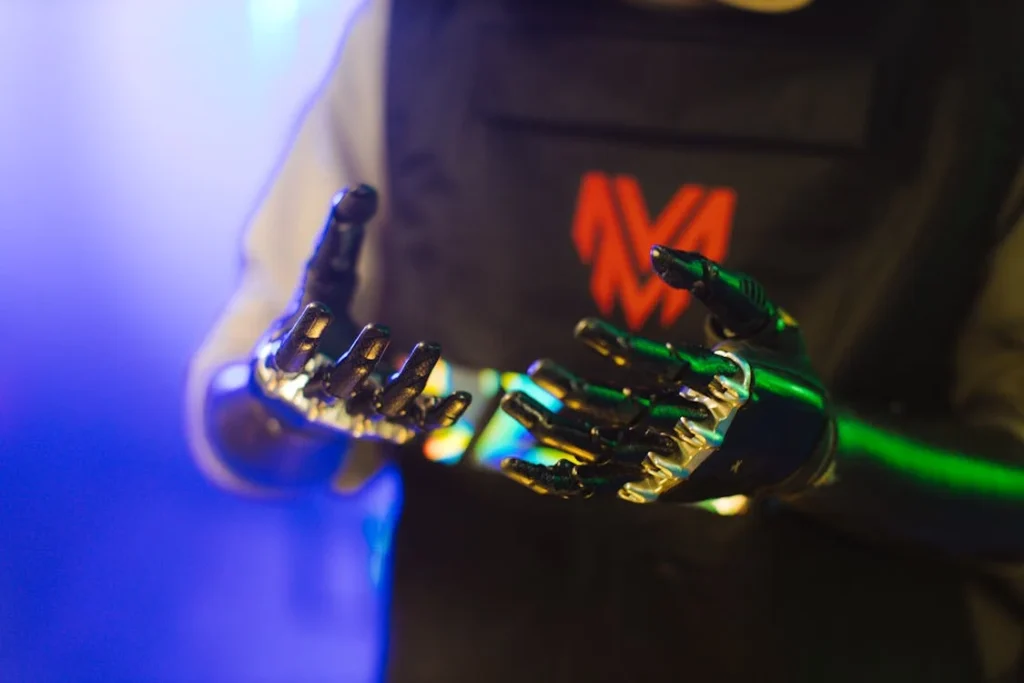
The Role of Traditional Prosthetics in Global Accessibility and Humanitarian Efforts
Traditional prosthetics are not only a reliable choice for individuals but also a crucial part of global efforts to provide mobility solutions for those in need.
In many parts of the world, access to advanced prosthetic technology is limited due to economic constraints, healthcare infrastructure, and geographic challenges.
Traditional prosthetics offer a practical and scalable solution that can restore mobility to a larger number of people without the barriers that come with high-tech bionic limbs.
Bridging the Accessibility Gap in Developing Countries
Millions of people worldwide live with limb loss, yet only a small percentage have access to advanced prosthetic solutions.
In developing countries, where healthcare systems may not have the resources to provide expensive bionic prosthetics, traditional prosthetics serve as a lifeline for those who need them most.
Because they do not require electricity, specialized software, or high-tech maintenance, they can be distributed and fitted in rural or underserved regions where access to medical care is limited.
Organizations dedicated to providing prosthetic care in lower-income countries often rely on traditional prosthetics due to their affordability and ease of customization.
Many of these prosthetics can be 3D-printed or manufactured using locally available materials, making them a sustainable option for communities that may not have access to imported medical devices.
Unlike bionic limbs, which require advanced training to operate, traditional prosthetics can be fitted and used with minimal instruction, ensuring that more people can regain their independence quickly.
Disaster Relief and Prosthetic Aid Programs
In regions affected by war, natural disasters, or accidents, traditional prosthetics play a critical role in rehabilitation efforts.
Conflicts and disasters often leave individuals with sudden and unexpected limb loss, creating an urgent need for prosthetic solutions that are fast to produce, easy to fit, and functional in extreme conditions.
Traditional prosthetics can be rapidly distributed in emergency situations, helping people regain mobility without the need for long training periods or reliance on complex technology.
Prosthetic aid programs operated by humanitarian organizations often focus on providing traditional prosthetics because they require fewer resources to produce and maintain.
Clinics in remote locations are able to fabricate, fit, and adjust traditional prosthetics using manual tools, ensuring that individuals receive the care they need without waiting for specialized electronic components or software updates.
This makes traditional prosthetics the most practical and effective choice for large-scale relief efforts.
Sustainability and Long-Term Viability
Sustainability is another key factor that makes traditional prosthetics a preferred choice in global healthcare initiatives. The simplicity of their design means they have a long lifespan and can be repaired with basic tools rather than requiring replacement.
When a component wears out, it can often be swapped or adjusted without the need for costly replacements or technical expertise. This allows users to keep their prosthetic for many years with minimal intervention, reducing the overall cost of care.
Additionally, traditional prosthetics contribute to environmental sustainability by eliminating the need for batteries, electrical waste, and high-tech materials that can be difficult to recycle.
Since they are built to last and require fewer technological resources, they create less waste and reduce dependency on expensive supply chains that may not be sustainable in every region.
A Future of Inclusive Prosthetic Solutions
While bionic prosthetics continue to evolve, traditional prosthetics remain an essential part of global healthcare. They provide mobility and independence to millions of people who might not otherwise have access to prosthetic care.
By focusing on affordability, durability, and simplicity, these prosthetics continue to bridge the gap between technology and accessibility, ensuring that no one is left behind in the journey toward improved mobility.
Conclusion
Traditional prosthetics continue to prove their value in a world where advanced technology often takes the spotlight. Their reliability, simplicity, and affordability make them a preferred choice for many individuals who prioritize function over complexity. Without the need for electricity, software updates, or intricate maintenance, traditional prosthetics offer a stress-free and dependable mobility solution.
Beyond personal use, these prosthetics play a crucial role in global accessibility efforts, providing life-changing mobility to individuals in remote areas and underserved communities. Their durability, ease of repair, and sustainability make them essential for humanitarian organizations and disaster relief efforts, ensuring that more people can regain independence without financial or technical barriers.
At Robobionics, we are committed to delivering high-quality prosthetic solutions that prioritize practicality and long-term value. Whether you are looking for a dependable prosthetic for daily life or a customized solution for active use, we are here to help you find the right fit. Contact us today to explore our range of prosthetics and take the first step toward effortless mobility.



